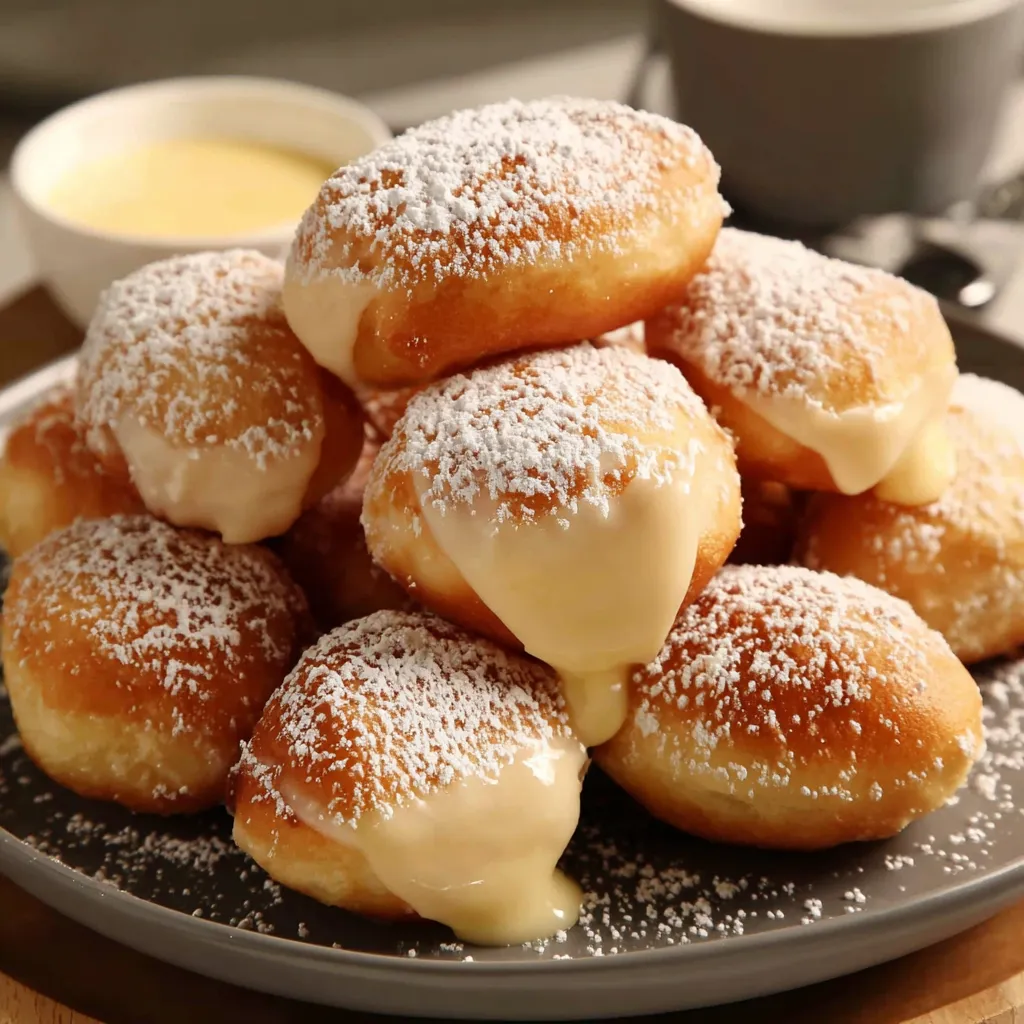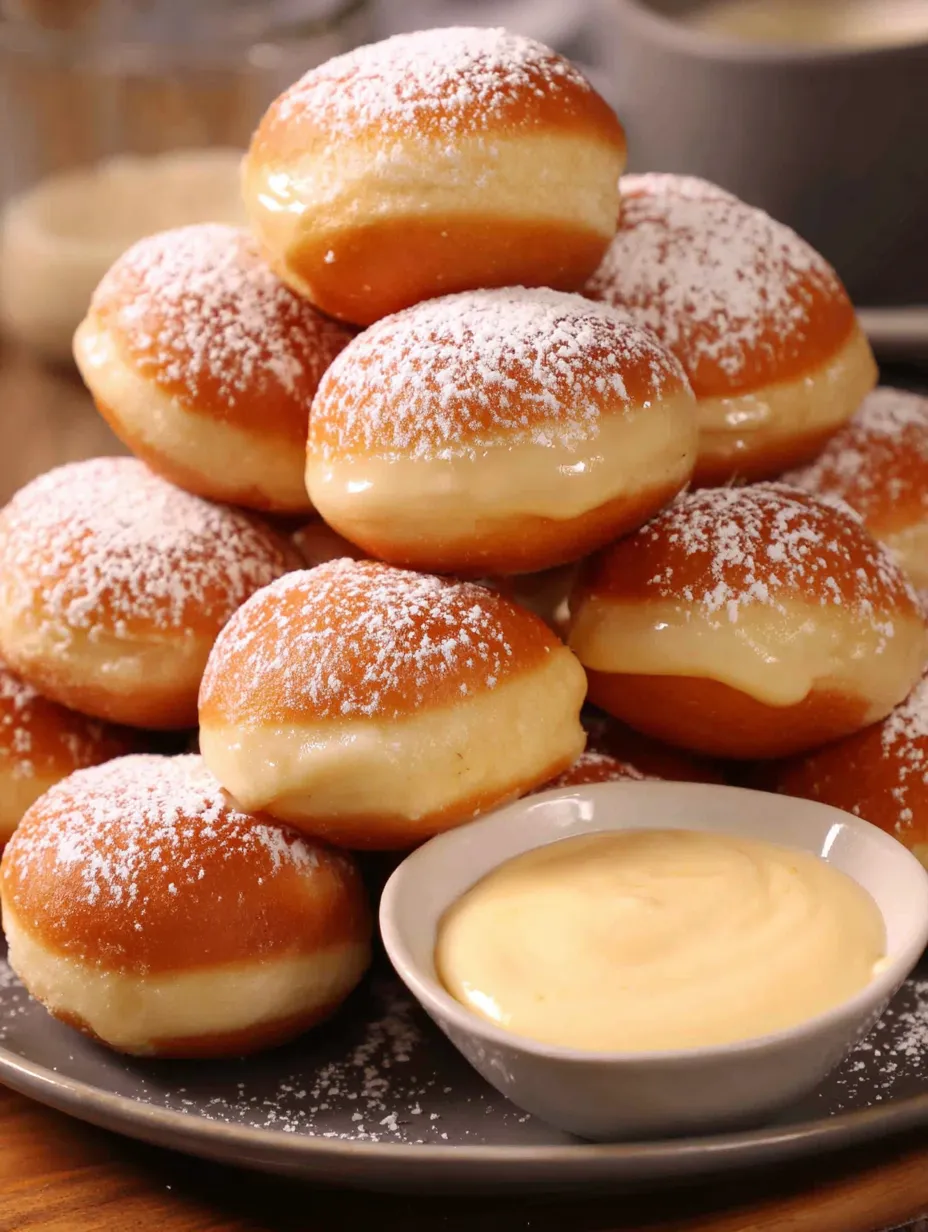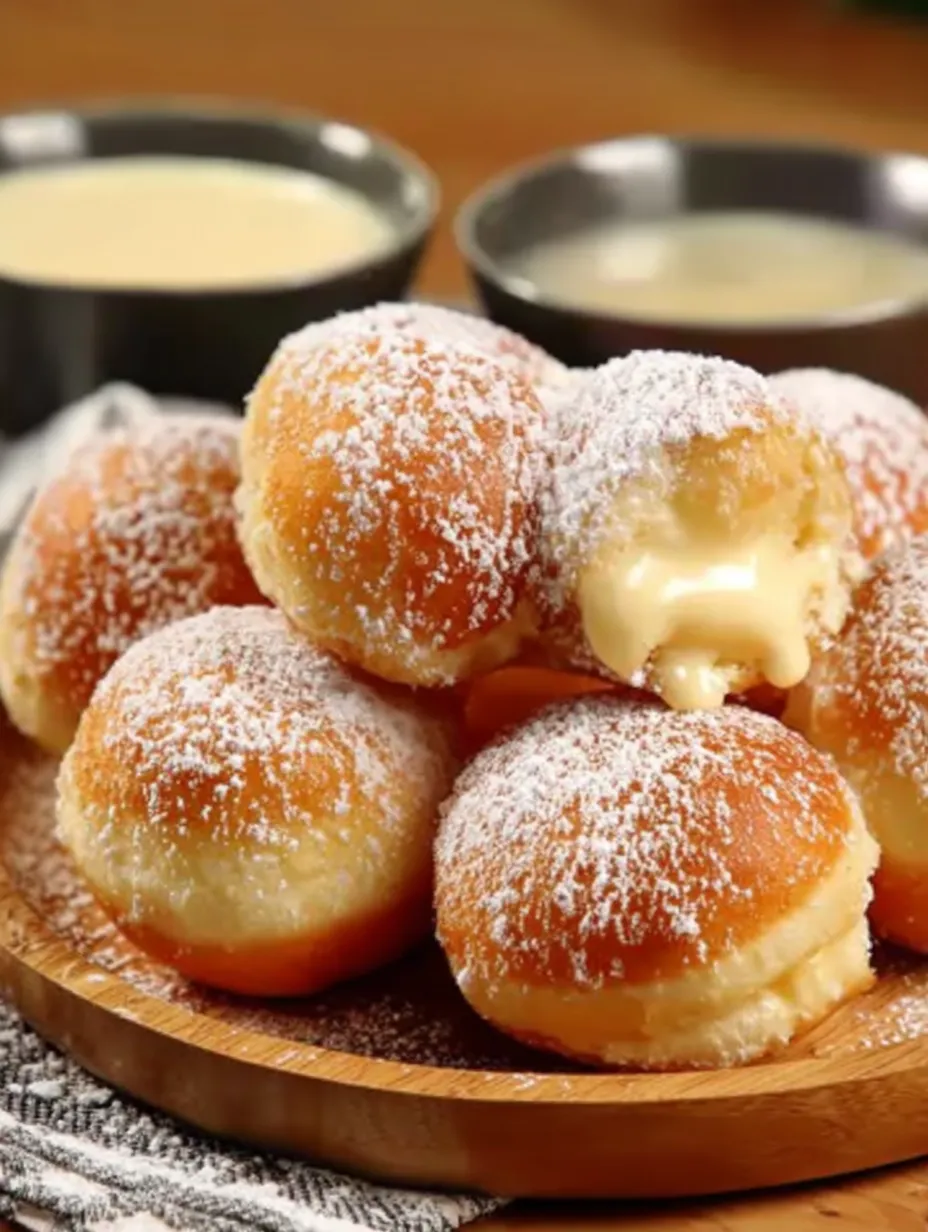 Save
Save
Vanilla French Beignets are perfect when you crave something sweet and delicate yet simple to make. With every bite, the light crispy exterior gives way to a tender center, finished with a dusting of sugar and the warmth of vanilla. This is one of those recipes I make when I want to bring a taste of Parisian bakeries to my kitchen.
I remember my first attempt at these beignets with my daughter on a lazy Sunday morning. The kitchen was filled with laughter and a sweet vanilla scent—now it is a cherished little tradition for us to make them together.
Ingredients
- All-purpose flour: gives the beignets their delicate structure—choose unbleached for better flavor
- Sugar: adds a touch of sweetness and feeds the yeast for lift
- Active dry yeast: is the secret to the airy pockets—make sure it is not past its expiration date for best rise
- Salt: balances the sweetness and brightens flavors
- Warm milk: activates the yeast and gives a tender crumb—use whole milk for richness
- Eggs: enrich the dough and help it puff beautifully
- Vanilla extract: infuses the whole batch with mellow perfume—pure extract is ideal
- Unsalted butter: adds subtle flavor and a delicate texture—melt before adding
- Powdered sugar: dusted on top creates that iconic French finish—sift for the softest snowfall
- Vegetable oil: is used for frying—choose one with a neutral taste and high smoke point like canola
Step-by-Step Instructions
- Activate the Yeast:
- Combine warm milk with sugar and active dry yeast in a small bowl Wait for about five minutes until you see foam appear on the surface This is key for a light result since it means the yeast is alive
- Make the Dough:
- Mix flour and salt in a large bowl Add the frothy yeast mixture eggs vanilla extract and melted butter Stir thoroughly with a sturdy spoon until a sticky dough forms You want everything just combined so the texture stays light
- Knead the Dough:
- Turn out the dough onto a floured surface Knead gently for five minutes using the heel of your hand until the dough feels smooth and elastic This step helps develop the gluten which is what gives beignets their chewy bite
- Let the Dough Rise:
- Transfer the dough into a lightly greased bowl Cover snugly with a towel Place somewhere warm and let the dough rest for one to one and a half hours You are looking for it to double in size This step is where all the flavor and puff comes from
- Heat the Oil:
- Pour enough vegetable oil into a deep pan so it reaches about two inches deep Place over medium heat and use a thermometer to ensure the temperature stays at three hundred fifty degrees Fahrenheit This makes sure the beignets cook evenly and get crisp without absorbing too much oil
- Fry the Beignets:
- Once the dough has risen roll it out on a floured surface about one half inch thick Cut it into squares or triangles Using a slotted spoon gently lower a few pieces at a time into the hot oil Fry for two to three minutes turning as needed until each is a rich golden brown
- Drain and Dust:
- Lift the fried beignets out with a slotted spoon Lay them on a paper towel lined plate so any oil can drain Finish immediately by showering with plenty of powdered sugar while still warm This ensures the sugar clings just right
 Save
Save
My favorite part of these beignets is that first warm taste of fluffy dough with vanilla woven through. My fondest memory is sneaking an extra one right off the plate with powdered sugar dusting my fingers and not a bit of regret.
 Save
Save
Storing Your Beignets
Beignets are best enjoyed fresh the day they are made when they are at their tallest and fluffiest. If you have leftovers place them in an airtight container at room temperature for up to one day. To refresh warm them for a few seconds in the microwave or briefly in a low oven and add another dusting of powdered sugar.
Ingredient Swaps and Substitutions
If you run out of active dry yeast you can try instant yeast but reduce the rise time a little. Almond or oat milk can be subbed for dairy milk if needed but this will change the final flavor and texture. Feel free to add a citrus zest or swap in almond extract for a fun twist.
How to Serve Your Beignets
Serve these with a strong cup of coffee or hot chocolate to make breakfast feel truly indulgent. They also make a delightful dessert when served warm with fruit preserves or a drizzle of honey. For a brunch spread pair them with fresh berries and whipped cream.
The Story of Beignets
Beignets have deep roots in French and New Orleans baking traditions. They have graced cafe menus for generations and are often enjoyed as a morning treat or a sweet bite with friends. Making them at home brings that special bakery magic to your table and inspires plenty of smiles.
Recipe FAQs
- → What gives French beignets their airy texture?
Active dry yeast helps the dough to rise and creates the signature light, airy texture unique to French beignets.
- → Can I prepare the beignet dough ahead of time?
Yes, the dough can be mixed in advance and left to rise overnight in the refrigerator for convenient frying the next day.
- → Is it necessary to use powdered sugar for finishing?
Powdered sugar is traditional for dusting, but you can experiment with cinnamon sugar or serve with fruit preserves as alternatives.
- → What’s the best oil for frying beignets?
Vegetable oil is commonly used for its neutral flavor and high smoke point, ensuring an evenly browned exterior.
- → Can these be made without eggs?
Eggs contribute to richness and structure, but you may use a substitute such as applesauce, though texture may vary.
